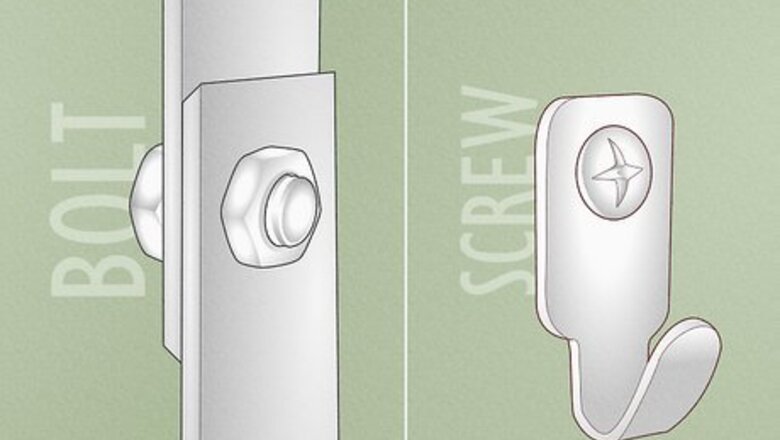
views
- Use a bolt with a nut and washer to hold objects together if the holes are unthreaded.
- Choose screws to assemble objects that have threaded holes.
- Pick bolts for heavy-duty construction projects in concrete, beams, metal, or studs.
- Use screws for plywood, sheet metal, drywall, and other small building projects.
Screw vs. Bolt Overview

Bolts hold objects together with a nut, but screws work on their own. When you insert a bolt through an object, you screw a nut onto the threaded end to apply pressure and secure it in place. When you use a screw, the tension on its threads pulls the objects closer to hold them together securely. Screws fit tightly into holes with pre-cut threads in the sides while bolts will not. Many bolts also use a lock washer between the nut and the material to dig into the material for an even more secure fit.
Differences between Bolts & Screws

Uses Screws and bolts are both used to fasten objects together, but bolts are for more heavy-duty projects. While bolts are the better choice for construction, building, or anchoring items, screws are best for home repairs, hanging objects, and DIY builds.
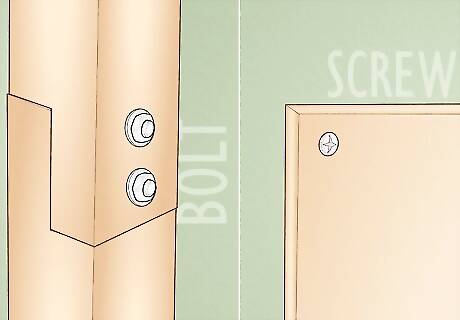
Materials Screws work best in materials like plywood, sheet metal, drywall, pressboard, and deck planks. Bolts can withstand more weight, so they’re best for fastening heavy pieces of concrete, metal, wooden beams, or studs.
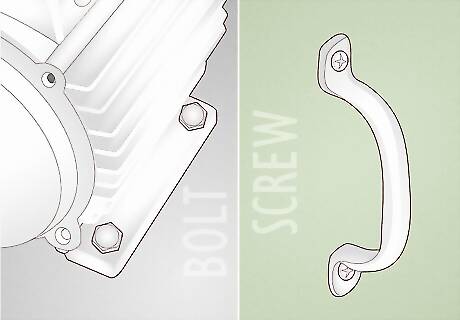
Strength When you tighten a nut and bolt, the force is evenly distributed across the fastener and the material so it’s able to withstand a heavier load. Screws are better for light or moderate loads since they only grip onto the material with their threads. Bolts and screws come in multiple sizes with varying strengths. Use a screw or bolt that’s about 2.5 times as long as the thickness of the material you’re fastening.
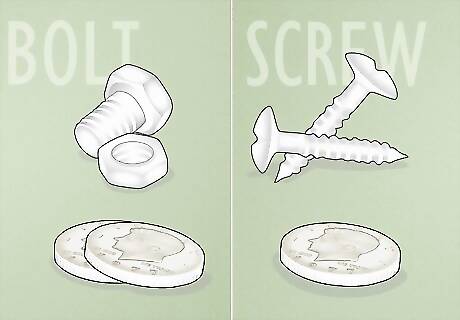
Cost Bolts and screws are similar in cost, but they vary depending on the size, material, and type you’re using. Plus, bolts need additional hardware to stay secure, so the extra costs of nuts and washers can add up and make them more expensive.
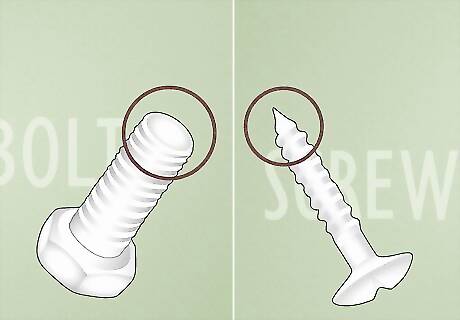
Shape Bolts have a flat bottom while most screws taper to a point. Most screws are “self-tapping,” meaning they have a pointed end so it can dig into the material even if it doesn’t have a hole already. A bolt typically has a straight, untapered shaft that makes it easier to screw a nut on later. Most screws also have threading up the entire shaft while bolts have smooth and threaded sections. Some screws, such as machine screws made for metal or electronic components, may have untapered ends.
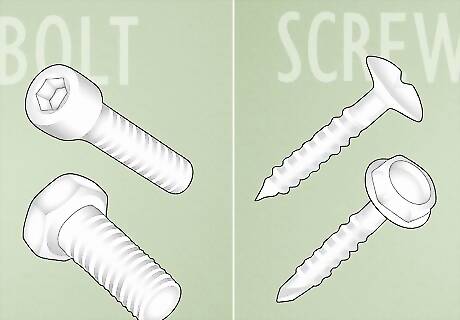
Types Bolts and screws both come in a wide variety of styles depending on what type of material you’re using them for. Wood screws, sheet metal screws, machine screws, and socket screws are some of the most common kinds used. Bolts also have many styles based on how you use them, such as anchor bolts for concrete, eye bolts for looping rope through, or U-bolts for attaching a pipe to another material. Screw heads come in different shapes. Flat or “countersink” heads sit flush with the material and work great for hiding wood joints. Round or raised screw heads are great for screwing metal pieces together.
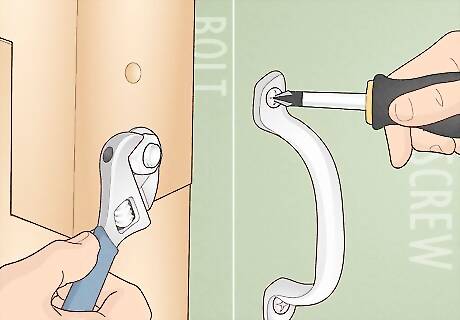
Required tools If you want to tighten or loosen a screw, a screwdriver is the perfect tool to use. For a bolt, a wrench works best for tightening or loosening the hex-shaped nuts. Some screws have unique slot shapes that require a special screwdriver. Screws with a single slot require a flathead screwdriver, ones with X-shaped slots need a Philips-head driver, and a star-shaped hole needs a Torx wrench. Some screws have hex-shaped heads, but they’ll still have a slot carved into the top for a screwdriver as well.
Can you use bolts and screws interchangeably?
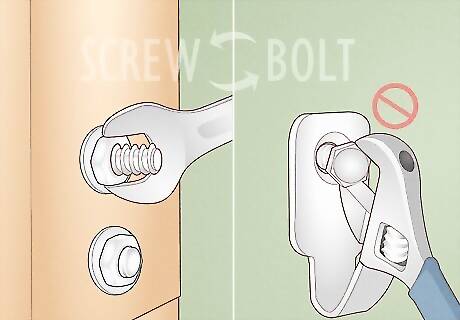
Some screws work in place of a bolt, but not all bolts work as screws. If the screw is the same size as the bolt you use, is made for the materials you’re fastening together, and has an untapered end, you’re able to put on a nut and washer to make it a bolt. However, if you try to use a bolt instead of a screw, it won’t stay tight since the threadings are too shallow to get a firm grip. With the added nut and washer, the pressure will distribute evenly so your screw will be just as strong as a bolt. Screws with tapered ends and wide gaps between the threads will not work as bolts since you can’t attach nuts to them. Bolts also stick out and are exposed, so you may want to use screws if you want a more aesthetically-pleasing build.


















Comments
0 comment